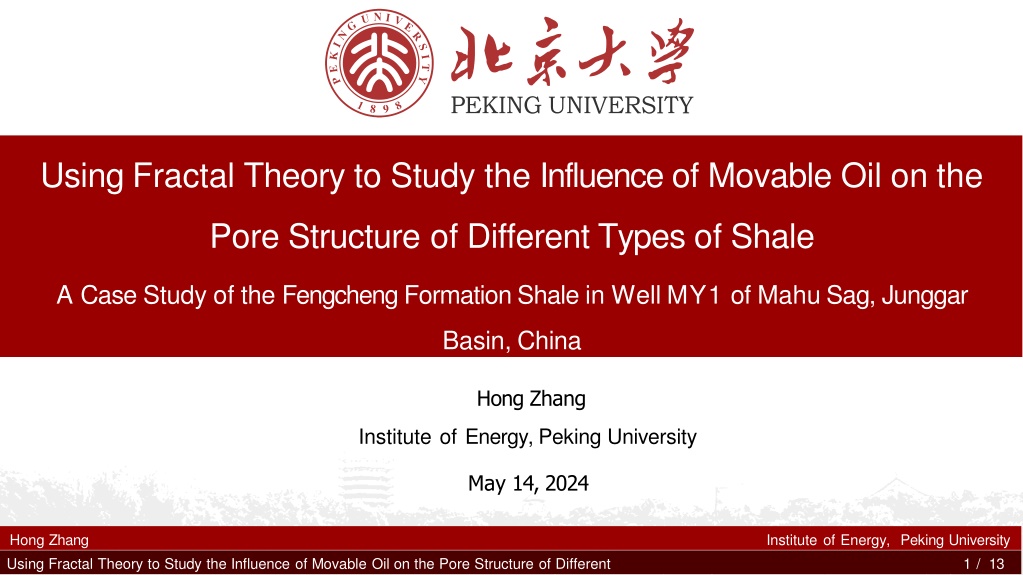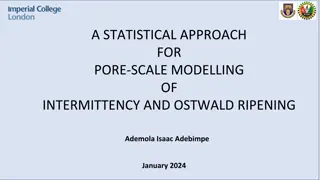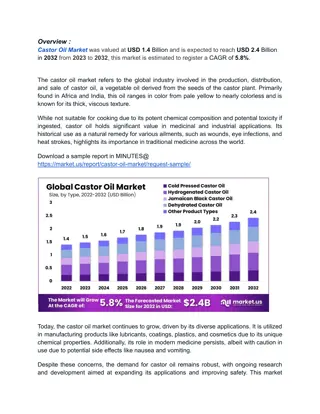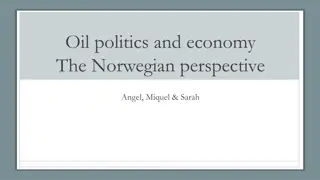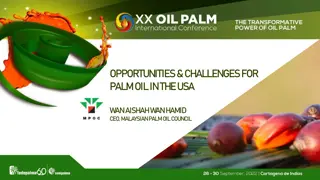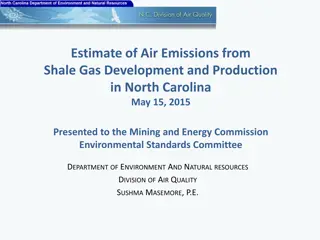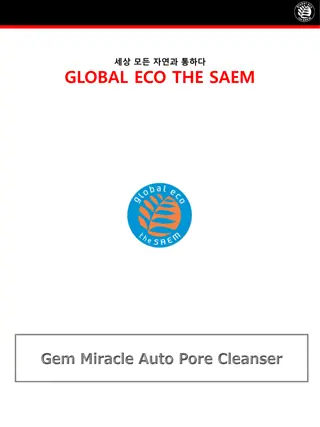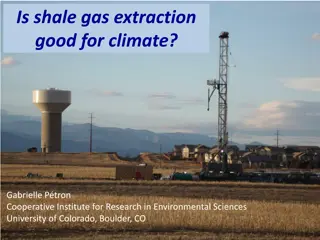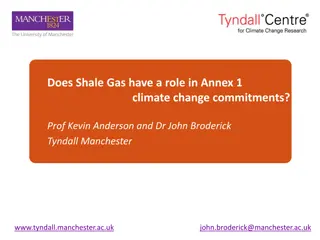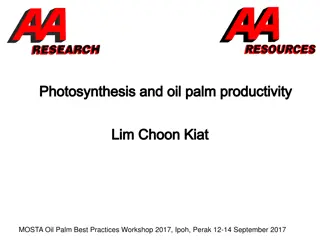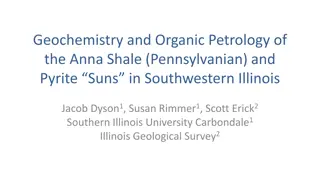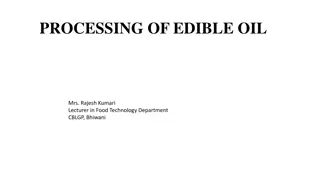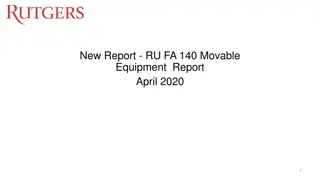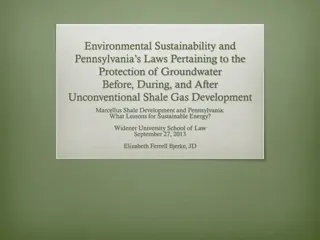Study on the Influence of Movable Oil on Pore Structure of Fengcheng Formation Shale Using Fractal Theory
This study by Hong Zhang at Peking University delves into the impact of movable oil on pore structure in different shale types, focusing on the Fengcheng Formation Shale in Well MY1 of the Mahu Sag, Junggar Basin, China. Utilizing fractal theory, the research explores the geological setting, methods like XRD analysis and N2 adsorption/desorption, and discusses results pertaining to mineral compositions. The study sheds light on the intricate relationship between oil presence and shale pore structure, crucial for understanding oil reservoir properties.
Download Presentation

Please find below an Image/Link to download the presentation.
The content on the website is provided AS IS for your information and personal use only. It may not be sold, licensed, or shared on other websites without obtaining consent from the author. Download presentation by click this link. If you encounter any issues during the download, it is possible that the publisher has removed the file from their server.
E N D
Presentation Transcript
Using Fractal Theory to Study the Influence of Movable Oil on the Pore Structure of Different Types of Shale A Case Study of the Fengcheng Formation Shale in Well MY1 of Mahu Sag, Junggar Basin, China Hong Zhang Institute of Energy, Peking University May 14, 2024 Hong Zhang Using Fractal Theory to Study the Influence of Movable Oil on the Pore Structure of Different Types of Shale Institute of Energy, Peking University 1 / 13
Contents Background PART 01 PART 02 Geological Setting and Methods Results and Discussion PART 03 Conclusions PART 04 Hong Zhang Using Fractal Theory to Study the Influence of Movable Oil on the Pore Structure of Different Types of Shale Institute of Energy, Peking University 2 / 13
Background (b) (a) Figure 1. (a) Composition of newly increased proven oil reserves of CNPC; (b) distribution of continental shale oil plays in China(Modified from Pang et al., 2023) Hong Zhang Using Fractal Theory to Study the Influence of Movable Oil on the Pore Structure of Different Types of Shale Institute of Energy, Peking University 3 / 13
Geological Setting In the northwestern region of the Junggar Basin Semi-deep to deep alkaline lake sedimentation The samples distributed in the lower member (P1f1) and the middle member (P1f2) of the formation were mainly Figure 2. (a) Structural setting of the Mahu Sag, Junggar Basin and sampling location of Well MY1; (b) columnar graph of lithology of Well MY1 Hong Zhang Using Fractal Theory to Study the Influence of Movable Oil on the Pore Structure of Different Types of Shale Institute of Energy, Peking University 4 / 13
Methods 1.X-ray Diffraction (XRD) Analysis Mineral compositions After oil extraction TOC content testing(original) TOC content testing again(extracted) Samples from Well MY1 2.Geochemistry Analysis Rock-Eval pyrolysis Combined with the Wang-Li model to calculate fractal dimension Pre and post extraction 3.N2 Adsorption /Desorption Hong Zhang Using Fractal Theory to Study the Influence of Movable Oil on the Pore Structure of Different Types of Shale Institute of Energy, Peking University 5 / 13
Results and Discussion Mineral Compositions Table 1. Sample number, depth, lithology and mineralogical parameters obtained by XRD analysis. Depth (m) 4716.34 4738.73 4740.43 4744.9 4751.36 4759.42 4766.56 4773.99 4790.94 4799.67 4800.45 4800.98 4802.2 4804.95 4816.79 4830.31 4835.28 4850.43 4851.11 Lithology (wt.%) Qtz + Fsp (wt.%) 29.7 45.1 50.9 61.6 38 41.5 54.7 66.6 66 39.9 46.7 57 36.1 69.9 40.8 56.4 37.9 61.3 61.6 Total Carb (wt.%) 62.5 40.6 39.2 33.1 50.5 52.5 38.7 22.6 25.6 56 49.8 33.1 44 15.5 55.3 32.6 50.4 16.8 16.3 Total Clay (wt.%) 4.2 9.5 6.4 2.5 9.9 4.4 3.7 3.2 2.9 3.1 2.3 4.3 13.7 6.6 1.2 5.7 7.4 9.2 9 Pyrite (wt.%) 3.6 4.8 3.5 2.7 1.7 1.5 3.0 7.6 4.4 1.1 1.2 5.5 3.8 6.8 2.7 3.8 4.3 7.6 7.2 Sample Number 1 2 3 4 5 6 7 8 9 10 11 12 13 14 15 16 17 18 19 Type Argillaceous silty dolomite Dolomitic mudstone Silty argillaceous dolomite Silty dolomitic mudstone Dolomitic mudstone Argillaceous dolomite mudstone Silty argillaceous fine sandstone Dolomite argillaceous fine sandstone Dolomite silty mudstone Dolomitic mudstone Silty mudstone Argillaceous dolomitic fine sandstone Dolomitic fine sandstone Calcareous mudstone Fine sandy dolomite Silty dolomite Silty argillaceous fine sandstone Dolomitic silty mudstone I III II II I I II II II I I II III II I II I II II Figure 3. Triangular plot of shale mineral composition Type I: calcareous shale (carbonate mineral content >50%) Type II: siliceous shale (felsic mineral content > 50%) Hong Zhang Using Fractal Theory to Study the Influence of Movable Oil on the Pore Structure of Different Types of Shale Institute of Energy, Peking University 6 / 13
Results and Discussion Geochemical Properties Table 2. TOC content of samples before and oil extraction. Type I Type II TOC variation Range(%) Average(%) Range(%) Average(%) Before extraction 0.54-1.04 0.78 0.46-1.42 0.90 After extraction 0.38-0.94 0.58 0.27-0.85 0.55 The extraction process has a certain impact on samples of different types. Siliceous shale have a greater amount of movable oil compared to calcareous shale. Hong Zhang Using Fractal Theory to Study the Influence of Movable Oil on the Pore Structure of Different Types of Shale Institute of Energy, Peking University 7 / 13
Results and Discussion N2Adsorption and Desorption Isotherms 2.0 1.0 #12 #14 For Type I (calcareous shale): 0.8 Type II H3 Type II H3-H4 1.5 like sample #15, ink-bottle-shaped pores For Type II (siliceous shale), the hysteresis loops can be divided: slit-shaped pores plates(sample #12) slit-like pores that are open all around(sample #14) ink-bottle-shaped pores(sample #19) 0.6 1.0 0.4 Quantity adsorbed (cm3 g 1) 0.5 0.2 0.0 0.0 0.0 0.1 0.2 0.3 0.4 0.5 0.6 0.7 0.8 0.9 1.0 0.0 0.1 0.2 0.3 0.4 0.5 0.6 0.7 0.8 0.9 1.0 4 10.0 #15 #19 8.0 Type I H2-H3 Type II H2-H3 3 with parallel 6.0 2 4.0 1 2.0 0 0.0 0.0 0.1 0.2 0.3 0.4 0.5 0.6 0.7 0.8 0.9 1.0 0.0 0.1 0.2 0.3 0.4 0.5 0.6 0.7 0.8 0.9 1.0 Relative pressure (P/P0) Original adsorption Original desorption Extracted adsorption Extracted desorption Figure 4. Isothermal adsorption-desorption curves of typical samples before and after extraction. Hong Zhang Using Fractal Theory to Study the Influence of Movable Oil on the Pore Structure of Different Types of Shale Institute of Energy, Peking University 8 / 13
Results and Discussion Fractal Analysis of Gas Adsorption Original 4 Let ????ln ? ?? ? ? ? ???? ?(?)1/3 ?(?) 0 ? ? = , ? ? = y=2.2756x-2.0998 R2=0.9984 (1) ?2? -4 lnA(X) Then -8 ??? ? = ???????? + ? ???(?) (2) -12 -16 Table 3. Calculating the fractal dimension of shale samples using Wang Li fractal theory. -6 -4 -2 0 2 lnB(X) Type I Type II Extracted 8 Samples 1 5 6 10 11 15 17 Average Doriginal 2.2298 2.2499 2.2099 2.2257 2.1921 2.2347 2.2022 2.2206 Dextracted 2.2306 2.2508 2.2131 2.2261 2.1911 2.2307 2.2004 2.2204 D 0.0008 0.0009 0.0032 0.0004 0.001 0.004 0.0018 0.0002 Samples 3 4 7 8 9 12 14 16 18 19 Average Doriginal 2.2425 2.3157 2.226 2.2756 2.2282 2.4024 2.2335 2.1759 2.3096 2.3367 2.2746 Dextracted 2.2406 2.3093 2.2256 2.321 2.234 2.4054 2.2329 2.1765 2.3124 2.3373 2.2795 D 0.0019 0.0064 0.0004 0.0454 0.0058 0.003 0.0006 0.0006 0.0028 0.0006 0.0049 4 y=2.321x-0.118 R2=0.9993 0 lnA(X) -4 -8 -12 -16 -6 -4 -2 0 2 lnB(X) Figure 5. The Wang Li fractal analysis of sample #8 (adsorption branch). Hong Zhang Using Fractal Theory to Study the Influence of Movable Oil on the Pore Structure of Different Types of Shale Institute of Energy, Peking University 9 / 13
Results and Discussion Fractal Analysis of Gas Adsorption 1.1 7 (a) (b) 1.0 Specific Surface Area 6 The fractal dimension appeared to be predominantly influenced by the pore structure, including parameters such as pore-specific surface area, pore volume, and average pore diameter (Figure 6 b d). R2=0.1394 0.9 5 R2=0.602 0.8 4 TOC 0.7 3 0.6 2 0.5 1 R2=0.5548 R2=0.00001 0.4 0 0.3 2.19 2.20 2.21 2.22 2.23 2.24 2.25 2.26 2.19 2.20 2.21 2.22 2.23 2.24 2.25 2.26 Fractal Dimension Fractal Dimension 0.018 20 (c) (d) Average Pore Diameter 19 0.016 18 0.014 Pore Volume 17 R2=0.5759 0.012 16 0.010 R2=0.8106 15 0.008 14 0.006 13 0.004 R2=0.6822 12 R2=0.5502 0.002 11 0.000 10 2.19 2.20 2.21 2.22 2.23 2.24 2.25 2.26 2.19 2.20 2.21 2.22 2.23 2.24 2.25 2.26 Fractal Dimension Fractal Dimension Original Extracted Figure 6. Relationships between fractal dimension and TOC (a), specific surface area (b), pore volume (c) and average pore diameter (d) of Type I samples. Hong Zhang Using Fractal Theory to Study the Influence of Movable Oil on the Pore Structure of Different Types of Shale Institute of Energy, Peking University 10 / 13
Results and Discussion Fractal Analysis of Gas Adsorption 1.6 6 (a) (b) Specific Surface Area 1.4 For the changes in fractal dimension of siliceous shales before and after oil extraction, we believe that they are the result of the combined effects of TOC and pore structure. Of the two factors, TOC may play a more important role. 5 R2=0.4314 R2=0.0443 1.2 4 1.0 TOC 3 0.8 2 0.6 R2=0.0271 1 R2=0.2218 0.4 0 0.2 2.15 2.20 2.25 2.30 2.35 2.40 2.45 2.15 2.20 2.25 2.30 2.35 2.40 2.45 Fractal Dimension Fractal Dimension 0.012 18 (c) (d) Average Pore Diameter R2=0.0497 0.010 16 Pore Volume 0.008 14 R2=0.0138 0.006 12 0.004 10 0.002 R2=0.0912 R2=0.027 8 0.000 2.15 2.20 2.25 2.30 2.35 2.40 2.45 2.15 2.20 2.25 2.30 2.35 2.40 2.45 Fractal Dimension Fractal Dimension Original Extracted Figure 7. Relationships between fractal dimension and TOC (a), specific surface area (b), pore volume (c) and average pore diameter (d) of Type II samples. Hong Zhang Using Fractal Theory to Study the Influence of Movable Oil on the Pore Structure of Different Types of Shale Institute of Energy, Peking University 11 / 13
Conclusions (1) Organic solvent extraction significantly reduced TOC content, with a greater impact on siliceous shale than calcareous shale, indicating higher movable oil content in the former. Calcareous shale (Type I) exhibited prevalent H2 H3 type hysteresis loops, indicating a uniform pore structure, while siliceous shale (Type II) showed diverse loop types, highlighting its complex pore structure. Oil extraction increased specific surface area and pore volume in both shale types, particularly in quartz-feldspathic mineral-dominated shale, due to the release of hydrocarbon-occupied pore space. Fractal dimension changes in carbonate mineral-dominated shale were influenced by pore structure, not TOC, while in quartz-feldspathic mineral- dominated shale, changes were not clearly correlated with TOC or pore structure, suggesting a combined effect, possibly with TOC playing a significant role. (2) (3) (4) Hong Zhang Using Fractal Theory to Study the Influence of Movable Oil on the Pore Structure of Different Types of Shale Institute of Energy, Peking University 12 / 13
Thank You! Hong Zhang Using Fractal Theory to Study the Influence of Movable Oil on the Pore Structure of Different Types of Shale Institute of Energy, Peking University 13 / 13
